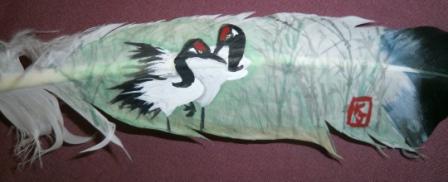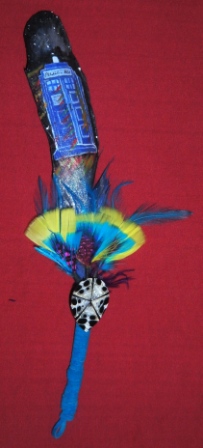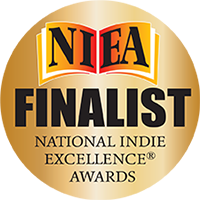Feather Paintings to Restorative Justice; Recycling Lives
From Feather Paintings to Restorative Justice
Life is all about change. It is said that the human body replaces itself every seven to ten years. Therefore one could contend, life in many ways, is about discarding the unusable and dysfunctional to make way for the new and capable. This may work great for cellular reproduction, but it is a horrible construct for human society.
It’s no secret that I have Native American heritage. While I am extremely proud of my lineage, I don’t let it define my work. So, like many Americans, I have a segregated life where there is a Ken Johnson who is known to the world as a culturalist, a conflict specialist, and also an author. While this side of me is known to crack a joke or two, I make it a point to portray myself as a professional who’s very factual and driven. On the other hand, my family knows the quirky, and sometime eclectic side of me. The man who is a husband, son, uncle, or cousin. They know my overpowering love of pork, the outdoors, and all things fun, strange, weird, and new. But, there’s also a group, which I consider to be my extended family, who know me simply as Awohali Galvlati Ugu – Principal Chief Soaring Eagle. This is the “young man with an old soul” who holds the passed-down knowledge and ways of the Florida Tribe of Cherokee Indians. Knowledge concerning healing plants, history, hunting and fishing tactics, legends and mythology, etc. It is also this side of me that’s known, by some, for my love of feather painting – a Native American art form.
American Indian culture embraces recycling and transformation. So, it should come as no shock that this philosophy is seen in many aspects of our life including, but not limited to, our artwork as well as our old system of justice – which the American version of Restorative Justice is somewhat based upon.
Giving Flight to the Outcasts
I bring all of this up to note how a discarded feather is, in many ways, no different than a wrongful offense taking place. Birds molt (discard) feathers when there’s a change in the seasons, a change in life, or even stress and injury. In many ways, human society, people, and American culture do this as well. When a wrongful offense is committed, our governmental structure oft times steps in to “heal the wound” by first punishing and casting aside the offender while in-turn also ostracizing the victim. This latter functionality is more easily seen in court cases where the offense is “styled” as “State of Florida vs John Smith” rather than “Jane Doe vs John Smith.” In essence, the state acts as a surrogate victim – taking all of the victimization rights from the true victim, while also re-victimizing the person again through an onerous process where they have no say and often receive no justice.
Before I begin to paint on a feather, I first contemplate it. I look at its shape, how it bends, the coloration, its original intended purpose, any outward signs of damage, etc. With my heart, I begin to talk to the feather to learn its story and “ask” what it wants to become. True, this may sound strange, but it is something artists often do. Two feathers from the same location may end up being two different paintings. One might be a colorful pelican perched on a pole along the water while another is a free flowing, bioluminescent jellyfish lighting up the dark depths of the sea below.
In Restorative Justice situations, we facilitators are presented with three different user groups with their own stories, issues, values, and opinions. Naturally, there is a victim and offender but what people never think about is the third party to all of this – the community. Like with the feathers, heart-felt questioning needs to take place with each party. For instance, a victim may actually just want to have a say in the matter and the harms repaired so that he or she can get closure. Meanwhile, the offender may have unmet needs which preclude her or him from atoning for the misdeed and making amends. The community may have suffered due to a loss of productivity from the victim and the wrongful action of the offender, spurring further misdeeds to be done by troubled youths wanting to act out. Like layers of paint on feathers, a careful RJ practitioner can use circles, mediation, conferences, panels, and even justice circles to help bring everything back into balance. Victims are made whole so that they can cast aside that awful title, just as offenders do once they have atoned for their offenses. While having no official title of “victim” or “offender,” the community is made stronger by being made whole and also by reassimilating two parties back into the fold.
Studies have consistently shown RJ practices have a meaningful and transformative impact on the communities that use them. Rather than leaving behind the broken and discarded, it lifts up and makes whole those which are broken. Like feather paintings, RJ gives flight to the outcasts.

Private Artwork
Ironically, most authors have hobbies besides writing. This seems odd for people but writing is work for authors...not just something to do to pass the time. As a polymath, my brain jumps around on so many seemingly unrelated topics of interest that I have multiple hobbies. One of these is feather art. Because so many people find this hobby unique, I have been asked to include some of my work on this site. None of this artwork is in my books and other than a hobby it has nothing to do with my known professional works. However, my fans seem to like it and if my work brings joy to people then I am more than happy to share it with them.
America is a mixture of cultures. Naturally, artforms should be merged as well to make new creations. Historically, polymaths have been tied to music, artwork, and other forms of expression. Most polymaths never sell their works.
Below are some representations of the work presently being done by me. This style of artwork marries traditional Native American feather painting with Japanese sumi-e rice paper painting using a varied array of techniques.

In previous works, art critics said that the feathers seemed more like fine China than feathers. They wanted to see more of the feather behind the artwork. While they did not seem to appreciate the innovation in the artform, I did appreciate their desires. All I have wanted from the start is a sumi-e inspired form of feather painting to revive a dying Native American artform. When possible, I do not want one to be able to see brush strokes. I want a look like rice paper ink paintings on a feather. "Two to Tango" is the next generation in my art that allows for the feather to shine through.

"On Freedom's Wings" is a 'next generation' painting as well done to illicit a more traditional image of a Native American-styled painted feather using my sumi-e inspired technique. The Cherokee word for eagle in the Eastern Tsalagi dialect is a-wo-ha-li while the Western Tsalagi dialect is we-ha-li. In the Cherokee culture the awohali was considered extremely sacred because of it flying so close to the Creator (Unequa or Yahowah). After years of being endangered and near extinction, their numbers are greatly increasing. The bald eagle is once again repopulating America and instilling hope and inspiration to a new generation who has never seen one previously in the wild. I can only pray that Native American cultures, presently dying away today in America, can come back like the eagle with new hope and new life.

"Eagle #2" is an experiment into a possible third generation style of painting. The developing new style would improve upon the styles seen in "Two to Tango" and "On Freedom's Wings" by being more natural and organic. While it is faster, it takes up more time, requires more artistic skill, requires more paint, and there are visible brush strokes. These are issues that still need to be investigated further and addressed individually before this proposed third generation style can be fully evaluated.

A gift for some friends of mine, this turtle is based off of a photo that I took at the fishing pier at Navarre Beach, Florida. The shallow waters give the Gulf of Mexico a green color sometimes which lends the area to being also known as the Emerald Coast. In Native American cultures, the turtle is revered. Since my friends love sea turtles, and are also Native American, I did this picture more in a tribal fashion painting the stem of the feather in yellow and red bands.

Titled "The Hunt" this picture is painted on an imitation eagle feather in order to invoke the colors of the crane being depicted in the classically styled sumi-e scene. This is the first of my 'first generation' style of sumi-e inspired feather paintings.

Titled "Tranquility" this picture is painted on an imitation eagle feather partly in reverence to the Native American heritage of feather painting and also to marry the duality of air and water as both being representative of tranquility. The koi depicted is representative of the contemporary sumi-e coming out of Japan where more colors are being used rather than just one or two colors as has been done in the past.

Playing a little bit on the popularity of the television series Duck Dynasty, the "Long Flight Home" is an homage to Native Americans in every way while still keeping the techniques used in previous works. Done on an imitation eagle feather, the mallard duck is landing in a pond of cattails. Ironically, Native Americans have historically made duck decoys using cattails. The feather stem is then wrapped and the end is looped all in traditional styles in keeping with many Native American tribes.

Sometimes, artwork just has to be fun. In this case, a British sci-fi television series is now invading America and causing its own sub-culture of devoted fans similar to what one would find with Star Trek, Star Wars, etc. "Flight of Fancy" is done on a turkey feather using the same techniques for the Native American and Japanese sumi-e feather painting hybrids. This time, the scene is a fantasy depiction of the T.A.R.D.I.S. (Time And Relative Dimension In Space) time machine from BBC's own Doctor Who. Multicolored flames burn on the outside of the T.A.R.D.I.S. in the middle of space as she carries the Doctor to his next great adventure. The exotic feathers are representative of other-worldly creatures that the Doctor may have visited (possibly mementos from Gallifrey) while the medallion made from seashell slices depicts that time stream similar to what is depicted on the show. The leather wrapping and loop is done in a Native American style using T.A.R.D.I.S. blue leather strips.

I don't normally like to do scenery pictures. However, sometimes it's good to do something a little different. This is a painting of Horseshoe Springs in Skull Valley, Utah.

"After Sunset" is a bit of a deviation from the standard work that I produce. I am still mixing contemporary styles but this piece pays more homage to my Native American heritage.

During a Royal Rangers class, I was explaining the benefits of conceptual drawing. Due to the popularity of television shows like Gator Boys and Swamp People, I often have to use contemporary topics to keep the attention of the students. So, I drew a "U" and a "V" and then put eyes at the top. I explained that the "U" represented the snout of an alligator and the "V" represented a crocodile. As I put it, "Give me an hour and a half and I can draw a nice alligator but I only have 5 minutes to draw both an alligator and a crocodile, explain the relevant data you need to learn about the two, and answer any questions." To that, one of the boys said, "Give you an hour and a half and you'd have one painted on a feather!" So, I took up the challenge and created this untitled piece. It is a submerged alligator with duckweed. Thanks to tweets from the shows' stars and fans, both from Gator Boys and Swamp People, this painting has received phenomenal coverage via social media.

